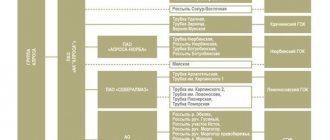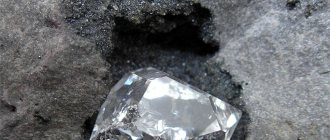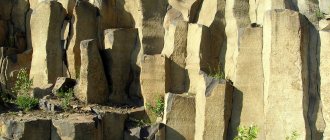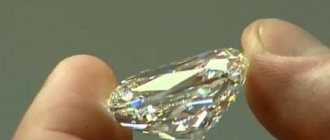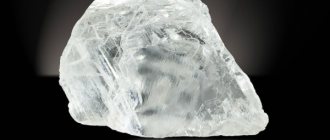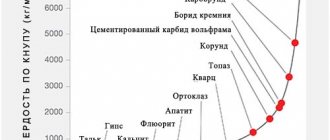The beginning of the way
Larisa Anatolyevna Grintsevich was born on September 3, 1923 in Kaluga, her father is a party leader, and her mother is an art critic.
Soon the family moved to Odessa, where the father took the post of secretary of the Suburban District Party Committee. The youngest daughter, Irina, was born there, and there in 1937, when Larisa was 14 years old, her father was arrested and shot. Larisa received the stigma of being the daughter of an enemy of the people. Nevertheless, after the death of their father, the mother and daughters were able to move to Leningrad, to their grandmother. There Larisa graduated from school and entered Leningrad University. Or rather, I almost did... It was 1941. And in June, Larisa, along with other graduates from Leningrad, ended up in Moscow - they decided to reward schoolchildren with a trip for excellent studies. Here they met the news of the Great Patriotic War. They were forgotten until September... Larisa spent the entire summer in Moscow, and her mother and sister at that time were evacuated to the Urals.
Larisa Popugaeva with her mother Olga. Source
In September 1941, Larisa was able to go to her family in Molotov (present-day Perm) and even continued her studies at the Faculty of Geology and Soil Sciences of Molotov University. By 1950, when Larisa graduated from university, her life was already closely connected with diamonds. In 1951, she went on a major expedition to the Arctic for the first time. And in 1952 she married Viktor Popugaev, a teacher at the Leningrad Civil Engineering Institute, and gave birth to a daughter.
In those same years, Larisa met the outstanding geologist Natalya Sarsadskikh, who became her mentor and leader.
Diamond ore beneficiation
Medium crushing body:
After diamond ore is extracted by any method, it is sent to a processing plant, where it will undergo several stages of purification. First, the rock must be crushed, since pieces of 1.5 meters in size are often encountered. Using cone and jaw crushers, the rock is crushed to a diameter of less than 0.5 meters. Next, the raw materials are sent to classifiers, where the ore is separated by density and size using a stream of water. The washed rock enters the vibrating sieve; it consists of several levels, each subsequent one has smaller holes, thus the raw materials are sorted into fractions. The vibrating sieve is often called "Rumble" because it makes a lot of noise when it operates.
Wet autogenous mill
The next step is necessary to isolate diamonds and medium-sized pieces of ore. Jigging machines deliver a pulsating stream of water, which dissolves or dislodges the rock, and the diamonds settle at the bottom of the installation. The rock of smaller fractions is processed in a different way, using chemical reagents - pneumatic flotation.
Substances, interacting with water, foam, and small particles of diamonds stick to the bubbles and are thus isolated from the rock.
X-ray luminescent separation
The main and control stage of diamond ore enrichment is X-ray luminescence separation. Along a special conveyor belt, the raw material is fed into blocks equipped with X-rays, when exposed to radiation, the diamond luminesces, and the device detects the flashes and knocks the diamond out of the total mass with a stream of air. Since a small amount of rock is blown out with the air flow, another stage of isolating, cleaning and sorting the diamonds is necessary.
These actions are then performed by people. Each diamond goes through three people who clean the stone from impurities, sort it into fractions, and evaluate its purity.
Diamond is not a standardized product; its value is influenced by a combination of various qualities - clarity, color and size. Each stone is assessed by a specialist. After completion of all stages of enrichment, diamonds of larger fractions are sent for cutting or sale in pure form, and fine-grained sand is intended for sale to industrial enterprises, from which tools and other materials will be made.
Reward the innocent, punish the innocent
Individual diamonds were often found in Yakutia. The problem was that the deposits - “diamond veins” - could not be discovered.
Natalia Sarsadskikh and Larisa Popugaeva decided that it was useless to search at random, and focused on searching for minerals that are satellites of diamonds.
They were found almost by accident: during the next washing of the sand, small red unknown pebbles appeared. Another new mineral was also discovered there - black, with a grain size of up to 7-10 mm. Geologists believed that it was ilmenite (iron titanate in composition), but very different from the classic version - it had a brownish-brown color at the edges and, as it turned out later, did not correspond to ilmenite in some optical properties. And then a natural concentrate was discovered very close by:
“On the surface of the spit lay a ready-made concentrate, carefully washed for us by the river itself... We were amazed by the coarseness of the grains that it consisted of... The grains of the concentrate minerals... you could simply choose among the stones... Against the background of large pitch-black minerals, bloody flames burned like lights. red and purple grains."
Pyrope of Yakutia.
Source Sarsadskikh and Popugaeva, having returned to Leningrad, began to study the literature and found out that the red stones are pyrope garnets and picroilmenites, often found in diamond deposits in South Africa. The trail was found. For several years, Sarsadskikh developed the theory that diamond deposits can be identified by pyrope garnets. Now we know that pyropes are satellites of diamonds: it is impossible to find a diamond where there are no pyropes.
Many millions of years ago, pyropes and diamonds almost simultaneously crystallized from volcanic lava at 1200–1700 °C and a pressure of 4000–5000 MPa and now lie in kimberlite deposits.
Searching for diamonds using pyropes is almost error-free - pyropes are fragile and quickly destroyed when transported, so the more of them, the closer the kimberlite pipe. But then, in the middle of the twentieth century, they did not yet know about this, and Sarsadskikh proposed a very bold theory.
By 1954, Larisa and Natalya realized that they were closer to diamonds than ever. But other geologists were catching up with them - both Muscovites and the Amakinsk Geological Exploration Expedition, an all-Union organization that had been working since 1949 and had previously found only native diamonds without signs of a deposit. The main search was scheduled for the summer of 1954, but in January Natalya Sarsadskikh gave birth to a child and could not participate in the field season. And pregnant Larisa decided to have a clandestine abortion - it was dangerous to her health, in addition, only in 1954 was criminal liability for illegal termination of pregnancy abolished. Larisa didn’t even tell the Sarsadskys about her actions.
In June 1954, during one of the expeditions, Larisa, using the method of detecting pyropes proposed by Natalya Sarsadskikh, discovered a kimberlite surface, which was later called the Zarnitsa pipe. The discovery for the USSR was colossal, because before this the vast country did not have its own diamond mining industry. The next year, in the same area, next to Zarnitsa, several more pipes were opened, including the richest one, Udachnaya.
Larisa decided to start her search from the Daldyn River, where pyropes were first discovered in 1953. Here, 18–30 km below the mouth of the Ken-Yuryakh River, which flows into Daldyn, Larisa and her assistant Fyodor Belikov took the first sand sample of 3 m3. Then they went up the river, discovering a huge amount of large ilmenites and pyropes. On the spit, which was formed when the Ken-Yuryakh flows into the Daldyn (Popugaeva called it Nadezhda), the first diamond was found. Geologists climbed higher and higher along the Daldyn and discovered another diamond weighing 8 mg near the Zagadochny stream. Popugaeva realized that the pipe needed to be looked for between the river and the stream.
In search of pyropes, geologists literally crawled along the ground - both in the heat and in the cold rain and thunderstorms, meter by meter, walking no more than two kilometers a day. The sand was washed up to the elbows in ice water. The nearest settlement is 300 km away, surrounded by hordes of midges and mosquitoes. At the very end, when the concentration of pyropes already hinted at the proximity of the kimberlite surface, Popugaeva lay down on the ground and carefully looked through it, lifting the turf with her hands. Geologists even joked that Larisa found her pipe “animal way.”
One day, lifting up the turf, Popugayeva saw blue clay underneath it, all covered in red flashes. As it turned out later, this was a kimberlite pipe.
Larisa immediately sent a message to the Amakinsk expedition, which supervises all geologists of the Union. And soon she arrived at the headquarters in the village of Nyurba, where she was greeted as a heroine. This discovery was supposed to make Larisa Popugaeva and Natalya Sarsadskikh world-famous geologists... But Larisa was the daughter of an enemy of the people and, by law, could not search for a strategically important mineral. In addition, the Amakin expedition was not eager to give away such a large-scale discovery to someone.
The chief engineer of the expedition, Mikhail Bondarenko, said at a meeting with the government that the discovery of the kimberlite pipe was the merit of the Amakinsk expedition. By distorting the facts, he did not risk anything, since he was a relative and friend of the Minister of Geology Pyotr Antropov.
The leadership of the expedition began a systematic persecution of Popugaeva, forcing her to retroactively go to work for them. She was kept at the expedition headquarters in Nyurbe, without being allowed to go home.
A month and a half of threats, pressure and promises of physical violence - “You will never see your daughter” - did their job. Larisa sent letters to Natalya Sarsadskikh, looking for help. She sent several letters to Bondarenko, but that’s all - that’s where the help ended. Larisa was arrested, she was threatened that she simply would not be found in the taiga... According to eyewitnesses, she cried almost all the time and eventually gave up. According to the memoirs of Ekaterina Elagina, an ordinary employee of the Amakinsk expedition:
“Larissa cried from morning to evening, smearing the paint spreading across her face, and, stopping for a short time to shed tears to tint her eyelashes, she began to cry again. She was clearly aware that she was in a trap from which she saw no way out, realizing how great Bondarenko’s opportunities were.”
In 1957, six geologists were awarded the Lenin Prize for the discovery of diamond deposits in Yakutia. Neither Larisa, nor Natalya, nor other female geologists who helped them in their work were on the lists. But there were men, half of whom, according to Larisa’s daughter Natalya, had never gone to the taiga for field research.
Where is the Mir kimberlite pipe located and how to get to it
On electronic maps you can find where the Mir kimberlite pipe is located by geographic coordinates (62.52886751539156, 113.99256382146285) or by the name of the deposit. On a map of Russia, you need to look for a mine in the Republic of Sakha (Yakutia), a thousand kilometers west of the republican capital of Yakutsk. The city of Mirny was built near the deposit, and the Irelyakh River flows.
Flights to Mirny
There are no direct flights from Moscow to the regional center Mirny. You can fly to the airport of the Yakut city only from the capital of the Republic of Sakha (Yakutia). Up to 8 flights daily fly to Mirny from Yakutsk, S7, Yakutia. The flight time is about 2 hours, tickets cost 30,000–60,300 rubles. You can check the details of the flight schedule and booking by following the link.
By car
The shortest road to Mirny is from Yakutsk. From the west (from Irkutsk), the Vilyui federal highway is just under construction. You need to travel by car from Yakutsk to the west along the Vilyuisky tract (highway A331). It is impossible to get lost on the only road in these parts, since there are no forks or branches on it. Along the highway you will pass the following settlements:
- Berdigestah;
- Orto-Surt;
- Tasagar;
- Vilyuisk;
- Verkhnevilyuysk;
- Suntar;
- Diamond.
The entire route, 1,174 kilometers long, can theoretically be covered in 19 hours.
In practice, motorists are faced with broken sections of the road between Vilyuysk and Nyurba, near Suntar. Ferry crossings are also delaying traffic. Therefore, it is better to plan two days for the entire route.
From the center of Mirny to the observation deck, from where you can view the quarry of the Mir kimberlite pipe, you can walk three and a half kilometers in 40 minutes.
Restoring justice?
When Popugaeva returned to Leningrad, former colleagues and Sarsadskikh decided that she had betrayed them and began persecution. The Amakinskaya expedition completed the matter by firing Popugaeva and doing everything to ensure that the researcher’s name disappeared—they didn’t even allow her to go to graduate school. Larisa was not taken back to her previous place of work either.
Popugaeva found herself between two fires: on the one hand, the geologists of the Amakinsk expedition, who no longer needed her, and on the other, former friends who did not want to understand or help her.
Larisa went to work at the Leningrad City Executive Committee, then at VNIIUvelirprom, where she headed the laboratory of semi-precious stone raw materials. She no longer dealt with diamonds, only with precious and semi-precious stones. In the early 1970s, Popugaeva even prepared an extensive “Atlas of Gems of the USSR” for publication, but it remained unpublished.
Only in 1970 did she finally defend her Ph.D. thesis at the Mining Institute, at which time she was unexpectedly awarded the “Discoverer of the Deposit” memorial badge - a small, but still recognition.
Underground method of mining diamond ore
Equipment for underground diamond mining
When open-pit mining of ore becomes impossible, they move on to the construction of underground mines. This mining method requires much more costs, but even with large investments in its organization, it still remains economically justified, since the depth of kimberlite pipes often reaches 1.5 km.
After the closure of the International Quarry, the remaining reserves of diamond ore, according to expert estimates, will be enough for another 25 years of uninterrupted production. In order to prepare the mine for operation, significant capital investments will be required - $3-4 billion. But most of the investments are required only at the initial stage of construction; significantly smaller amounts of money will be needed for operation.
The construction of underground mines is carried out in difficult climatic conditions. Low temperatures are complemented by aggressive groundwater. They are highly mineralized, and under their influence, wheel tires are corroded. Water must be constantly pumped out. This happens in two stages. First, with the help of pumps, liquid is taken and pumped into bunkers located in the middle of the shaft, then, after they are filled, the water from them is pumped to the surface.
Diamonds are mined underground using combine mining.
Diamonds are mined underground using combine mining. The cutters of the machine rotate, and under their pressure the rock is destroyed. It is then loaded onto special machines that deliver the ore to the surface. The scheme is quite simple and similar to the quarry method; sometimes it is possible to use explosives to destroy kimberlite rock. The most expensive and difficult thing is ensuring the safe operation of miners and equipment underground.
To transport people to their place of work, a cage similar to an elevator is used; up to 20 people can fit in it. The descent time to the bottom point is seven minutes. Oxygen must be constantly supplied to the mine; for this purpose, a cage shaft is built; it serves as an elevator for lowering and lifting miners, cargo, as well as for supplying air to the mine.
The depth of this pillar is 1065 m, diameter is 6.5 meters. A skip shaft is built to release rock and can be used as an emergency lift for people. Niches have been created underground for miners to rest; they are located at a depth of 300 meters; the temperature here is comfortable, dry and warm.
Main economic indicators
ALROSA Group enterprises produced more than 37 million carats of diamonds.
Of these, 60% goes for industrial purposes and 40% for jewelry. Diamond mining in Yakutia is carried out by the largest enterprise in Russia - OJSC Alrosa. The annual production of precious stones amounts to 35 million carats. The company accounts for 97% of all Russian and 25% of global diamond production.
Every year production volumes increase, new deposits are developed, and underground mines are built. Revenue from diamond sales per year is more than 5 billion US dollars. Annual increase in net profit at 3%. In the future, it is planned to increase this figure due to the completion of the construction of mines, which requires significant capital investments.
According to preliminary calculations, up to four billion dollars are needed to equip one underground mine. Due to such expenses, Alrosa was on the verge of loss in 2008, but the state supported the company by allowing the sale of shares, a significant part of which was acquired by VTB Bank.
According to experts, the deposits owned by OJSC Alrosa are quite promising, the expected production volume is 1.23 billion carats, of which 1.014 billion are proven, and 0.211 billion are probable. A carat is a generally accepted measure of the weight of precious stones and is equal to 1.5 grams.
Video: Joint Stock
Peculiarities
To operate the mine, ALROSA first tests kimberlite pipes, gradually commissioning energy capacities. Once the preparation period is over, explosives are used to remove soil on the surface, which is then dumped somewhere nearby. Next, excavators and trucks are used: it is reliably known that one bucket contains about 30 tons of soil or ore.
Ore processing
Of course, you cannot see diamonds with the naked eye, because they are hidden inside the rock and must be extracted. Many people feel that ore is a crumbly mixture of various rocks and lumps of dirt.
The plant operates 24 hours a day, although operations may be suspended for approximately 12 hours every two weeks for maintenance purposes.
The first stage of ore processing is as follows: huge pieces of rock are crushed into small ones (about five centimeters in size). How? Using jaw crushers and so-called “wet grinding”, where water is used to break down various lumps of rock.
The second stage, the direct extraction of diamonds from the ore, can be accomplished in several ways. One method is X-ray separation. Diamond-filled ore is exposed to x-rays. Using this approach, the stones glow and a special tool cuts them off from the ore using a stream of compressed air.
There is another way: small pieces of ore are placed in an automated device, where small diamonds are transferred to the final stage of concentration and separated from other particles that settle to the bottom.
Deadly "pickle"
In the language of miners and geologists, the Mir quarry and mine have always worked “in difficult hydrogeological conditions” - here, under the permafrost, reaching a depth of 200–300 m, there are salty waters. Mineralized, that is, saturated with various substances, mixed with methane, hydrogen sulfide and even oil, these waters are compressed by underground pressure. They do not freeze even in the terrible Yakut frosts, penetrating into all the pores and cracks of rocks.
To save the diamond “Mir” from these underground “brines,” many deep “dewatering wells” were initially drilled along the perimeter of the quarry. But it became increasingly difficult to deal with the “brines,” and in 1977 they had to start pumping water out of the quarry. Over the next decade, 75 million cubic meters were pumped out - a rather large river.
Unusual place
It is interesting that helicopters do not fly in places where kimberlite pipes are installed. Why? A huge funnel with a depth of almost 500 meters and a diameter of about one kilometer initiates updrafts that can seem to suck in aircraft.
The diamond quarry looks very beautiful: according to eyewitnesses, being at the bottom you feel dizzy, but when you rise up you experience euphoria. Some people even dream of being at the bottom of such a quarry with a parachute. Be that as it may, after reading this article, you most likely also want to take a closer look at the diamond mining industry.
“We lit a pipe of peace...”
“Tabak” was truly magnificent - within three years, open-pit diamond mining began here, on the banks of a small Yakut river, right in the dug quarry. Another year later, the settlement that arose here (with a population of 5,700 people) received the status of a city and a name directly related to the radiogram of the pioneer geologists. So in the future, 2022, the city of Mirny will celebrate its 60th anniversary.
This year, 2022, marks exactly 60 years since stripping work began at the Mir diamond mine - the removal of rocks covering minerals. Over the decades from 1958 to 2001, the largest diamond quarry in the world by total volume arose here - 525 m deep and about 1.2 km in diameter. By the end of the 20th century, trucks moving along a spiral road along the walls of the quarry needed to travel over 8 km to rise from the bottom to the surface, and helicopters were forbidden to approach the giant funnel, as they were drawn into the quarry by downward air currents.
The largest diamond found in Russia, weighing more than 68 g, was mined here in 1980. This small lemon-yellow piece is rightfully one of the largest and most famous diamonds on the planet. These days, a diamond “stone” of this size costs more than $7 million. In just forty years, more than a trillion rubles worth of diamonds were extracted from the Mir deposit by quarrying at prices at the beginning of the 21st century.
Project of the future
Today, employees of the Alice architectural bureau have developed a grandiose plan for using the exhausted quarry. The authors of this concept propose to create a “City under a Dome” in an empty huge pit. It is assumed that the pit will be bursting with a concrete structure, and a transparent dome with solar panels capable of generating up to 200 MW of electricity will be installed on top.
The internal space is planned to be divided into three levels:
- lower tier for growing agricultural products;
- medium - for creating forest parks designed to purify the air;
- the upper part will be occupied by a residential area for 10 thousand people.
A constant comfortable temperature will be maintained on the territory of the autonomous eco-city. In addition, you can use the heat of the earth itself. In winter in Mirny the air cools to -60°C, but at a depth below 150 m the ground temperature is above zero, which adds greater energy efficiency to the project.
Leading position
Last year, more than 43 million (!) carats were mined in Russia. The company's share accounts for about 95% of the country's diamonds. Since the beginning of this year, the company has sold nearly $2.4 billion worth of precious stones (or 35 billion rubles). Most of the precious stones are mined in the Yakut region of the country. It is noteworthy that the territory of Yakutia (one of the regions in Siberia) is almost five times (!) the size of France, but the number of people living there does not reach one million.
ALROSA has 12 diamond mines (both underground and open-pit). Ten of them are located in Yakutia. In addition to Russia, gemstones are also mined in Botswana, Canada, Namibia and several other countries. All of them are inferior to the Russian company in terms of volume and production of precious materials. For comparison, Botswana, which is next to Russia in the sale of stones, produced almost half as much diamonds: 24 million carats.
